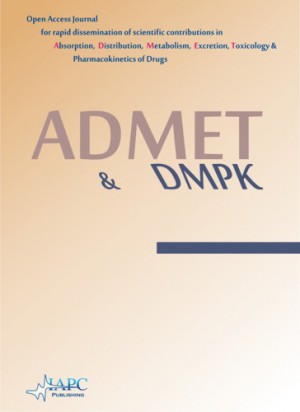
ADMET & DMPK
Yazarlar: Godefridus Peters, Anne-Sophie Govaerts, Hans Hendriks, for the EORTC- Pharmacology and Molecular Mechanism Group
Konular:-
DOI:10.5599/admet.6.1.496
Anahtar Kelimeler:EORTC-PAMM,NCI,CRUK,In vitro screen,Pharmacological approach,Anticancer drug development,European NCI compounds
Özet: Drug development consists of many sequential and parallel steps; failure in one of the steps can lead to discontinuation of the process. The process is time-consuming and very expensive, especially the clinical phase. In order to enhance cancer drug development in the 1980s, the National Cancer Institute (NCI) adopted a new screening system using 60 different tumour cell lines from various histologies. All standard drugs were tested in this panel and it is still open for testing of new chemical entities (NCE) of potential interest. The European NCI compounds initiative, a collaborative programme of the NCI, the Cancer Research Campaign (CRC; now CRUK) and the Pharmacology and Molecular Mechanism Group (PAMM) of the EORTC (European Organization on Research and Treatment of Cancer), was initiated in 1993. The programme aimed to help the NCI reducing its backlog of in vivo testing by further evaluation of interesting European compounds using a pharmacologically directed approach. Considerable multidisciplinary expertise in drug development was combined by the CRC and EORTC-PAMM: chemists, pharmacists, biologists, pharmacologists, oncologists. Selection criteria for European NCI compounds included novelty of the NCE, in vitro activity, if available in vivo and hollow fibre activity, and COMPARE negativity. Over a period of more than 20 years 95 out of approximately 2,000 reviewed compounds were selected. These compounds were put through a series of stepwise pharmacological tests comprising solubility (suitable formulation to administer the NCE to mice), feasibility to develop a simple analytical assay (usually HPLC), limited toxicology and angiogenic properties. This paper provides examples to illustrate the rigorousness of the elimination process of the compounds and discusses the way to improve the process by inclusion of more physico-chemical parameters.
Dergi editörleri editör girişini kullanarak sisteme giriş yapabilirler. Editör girişi için tıklayınız.